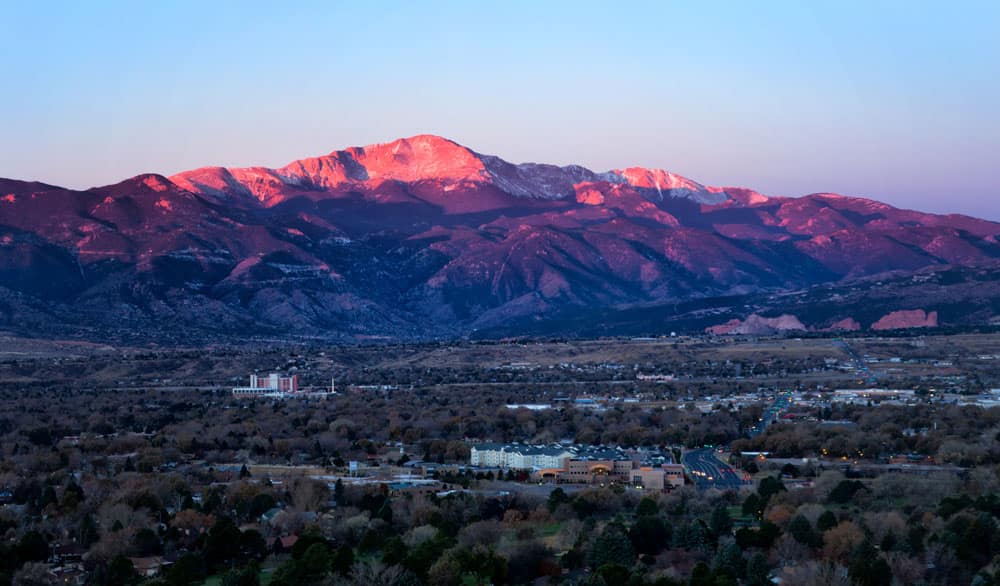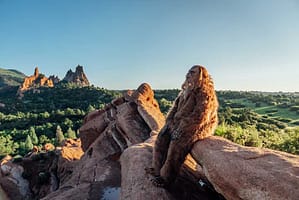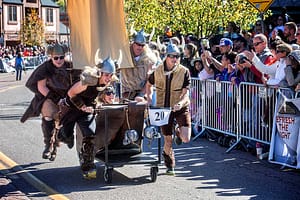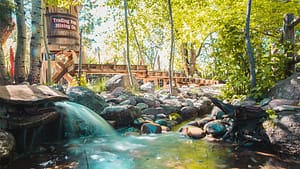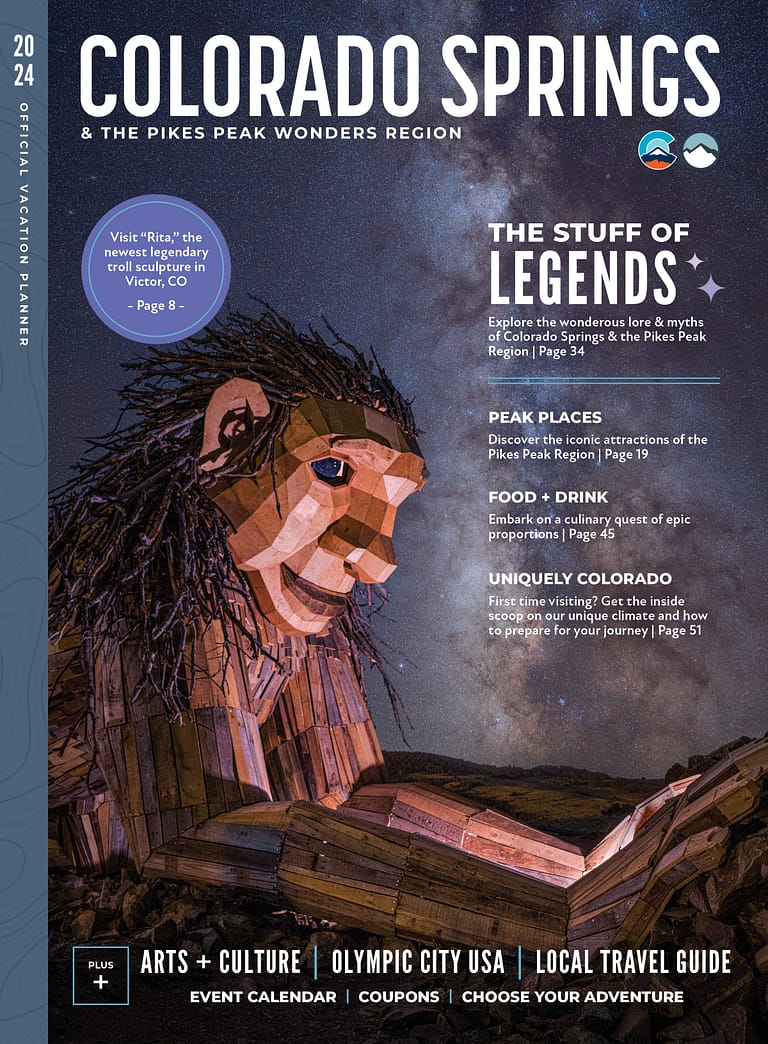The Ute and Pikes Peak
Note: Spelling variations and some stats or numbers will vary from source to source. We have taken care to use tribal resources and the stories and words of Ute individuals to explore the history of the Ute in the presently named Pikes Peak region.
Long before the towering fourteener west of Colorado Springs was referred to as Pikes Peak, it was known as Tavá Kaa-vi — the Sun Mountain. The mountain was named such by the indigenous Nuche tribe, a Numic-speaking people (Uto-Aztecan) known today as the Ute. At the time, the Nuche tribe consisted of 12 different bands. The bands who frequented the present-day Pikes Peak region were nomadic groups known as the the Mouache, the Caputa and the Tabeguache (later called the Uncompahgre).
Who Are the Ute?
The Ute are the only people indigenous to present-day Colorado, and they lived throughout Utah, New Mexico, Nevada, Wyoming and Arizona as well. The state of Utah is named for the tribe, and a large number of landmarks and natural resources in Colorado are named for the tribe, its bands and important people (Ute Pass, Uncompahgre National Forest and the town of Ouray, to name a few).
The Ute call themselves Nuche, which means “the people.” However, the name isn’t simply a descriptor. It means the people, and it is meant to set the Nuche apart as special and chosen. One iteration of the creation story of the Ute explains this designation. (Please note that there are multiple versions of the creation story. We have elected to present the version shared on the Southern Ute Indian Tribe website.)
As told by Southern Ute Elder Alden Naranjo in Ute Indians Art and Culture, from Prehistory to the new Millennium, the creation story of the Ute began when Sinawav the Creator tasked Coyote with the job of carrying a single closed bag to a sacred location. Coyote was told explicitly not to open the bag for any reason until he reached the proper place. Coyote, the sassy individual that he was, disobeyed Sinawav and opened the bag on the way to complete the mission. As soon as he took a peek, people began to pour from the bag and scatter in all directions. Only a small number remained in the bag and Coyote hurriedly deposited them in the proper location.
The few people that made it to where the Creator sent them were designated as the “chosen ones,” the real Utes. Those people who had escaped when Coyote opened the bag? Well, that was a bit of a problem. Sinawav informed Coyote that the escapees would forever war with the chosen people. Fortunately, the Ute who remained were strong, brave and determined to thrive, despite Coyote’s mistake.
The Enduring Connection Between the Ute People and Tavá (Pikes Peak)
The Ute people have resided in the region for hundreds of years. They were the first people of the land and remain the oldest continuous residents of Colorado. Garret Briggs, coordinator of the Native American Graves Protection and Repatriation Act, Southern Ute Cultural Department, describes the Ute as having been placed on mountain peaks in the region since “time immemorial” to keep the people close to their Creator.
According to Briggs, all bands in the region and surrounding areas considered Tavá to be a sacred place and one of the mountains upon which the Creator placed the chosen people. The Nuche named the Peak the Sun Mountain because it was the first natural land formation to meet the dawn each day. Briggs also notes that the Mouache lived on the eastern side of the Peak and the Tabeguache frequented the western side, with their territories overlapping. The Caputa would venture onto the southern section of the Peak for ceremonies and gatherings.
The Ute people have a deep and reverent connection to the region. While the mountain’s current namesake, Zebulon Pike, never made it to the summit, the Nuche frequented the summit of Tavá for a variety of purposes long before and after Pike moved on to other expeditions. Arguably, if you follow the creation story of the Ute, they were the first to top the Peak, as their people originated from the summit itself, by direction of their Creator.
The Peak contains many sites that are important to the history of the Ute people. However, sites of significance are not always disclosed publicly in order to prevent curiosity-seekers from destroying remaining artifacts. The Sundance ceremony was conducted on the Peak (and still is today), a solemn, sacred ceremony of renewal that occurs once a year, midway through summer.
The Nuche also performed (and still perform) the Bear Dance, a rite of spring that casts off the sleep and stuffiness of winter and welcomes in the life and optimism of a whole new season. Ignacio, Colorado, the location where the Ute were forcibly relocated beginning in the late 1800s, hosts both events every year and invites the public to attend.
Where Are They Now?
The Ute people are still present in Colorado and Utah, although only a few thousand remain. Of those who remain, more than half live on reservations established when the Ute were forced to move. The Uintah-Ouray Reservation in Utah is the second largest reservation in the country, covering 4.5 million acres of land that is cared for by the tribe. There are only three bands remaining in Utah, including the Uncompahgre band that once frequented the Peak. These bands are designated as the Northern Ute Tribe
The Mouache and the Caputa make up the present-day Southern Ute Indian Tribe located in Southern Colorado (the aforementioned Ignacio). The last remaining band is the Weeminuche band, referred to as the Ute Mountain Ute Tribe located on the Ute Mountain Ute Reservation in Towaoc, Colorado.
You can visit all three reservations and their respective museums to learn more about the Ute people and their impact on the Pikes Peak region. Colorado Springs is also home to several attractions that explore the history of the Ute people and their significant contributions. You can also learn more from the comfort of home by checking out some of the links we’ve shared here today. You may be surprised to learn just how much impact the Ute have had on our present-day community!
